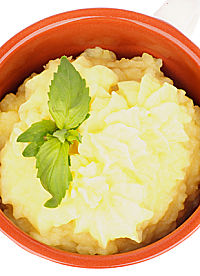Ingredient Articles
Sucralose
By John DeCosmo, D.O.
Most of us are now aware that excess consumption of carbohydrates is associated with obesity and that sugar is a main contributor to the carbohydrate overload in America. Because of this, many people think they have to give up sugary sweets in order to lose weight so they turn to artificial sweeteners. So far, so good, yet there are pros and cons to consider with each product.
There are several sweeteners in the marketplace and nearly all of them have negatives associated with them to some degree. The best known sweetener is, of course, sugar. One of the most used by our food industry is high fructose corn syrup. Then we have many recognizable artificial sweeteners or sugar substitutes such as aspartame, stevia, saccharin and sucralose. And we also have some lesser-known products such as neotame, acesulfame potassium, and advantame. All of these artificial sweeteners accomplish the objective of reducing carbohydrates in our diet and, in turn, should help us reach our health goals, and many studies support this line of thinking.
“As overweight and obesity-related health conditions, including cardiovascular disease, type 2 diabetes and some types of cancer, become more problematic; it's critical to identify strategies that help facilitate weight loss or weight maintenance," says Vanessa Perez, Ph.D., an experimental biologist and Managing Scientist at the Center for Epidemiology and Computational Biology, Exponent, Inc, adding "… the results show that using low-calorie sweeteners resulted in statistically significant reductions in body weight, BMI, fat mass, and waist circumference."1
In spite of Dr. Perez’s and similar studies, someone can make arguments why each or all of the aforementioned sweeteners should never be used, yet it isn’t practical to expect people to give up all things sweet. So how does one choose? It isn’t an easy choice, especially when we’re served many of these without our knowledge, either because we failed to read the ingredients in the nutritional label or maybe the people and companies who prepare our food products simply didn’t bother to disclose what they used.
Dr. Perez further states, “Conflicting research on low-calorie sweeteners and body weight have led to some debate about the relationship between low-calorie sweeteners and body weight."2
In any case, we should all be cognizant of what we consume and we should do so without undue stress caused by myths and scare tactics. Sucralose comes to mind when myths and scare tactics are used.3 So let’s put sucralose into perspective:
Sucralose is used to add sweetness to foods and beverages without adding calories or carbohydrates. Making sucralose begins with sucrose, which is simple table sugar. Yet the final product is very different from sugar. Sucralose is made by replacing three specific hydrogen-oxygen groups on the sugar molecule with three chlorine atoms. This results in an intensely sweet, no-calorie sweetener. Yet unlike sugar, the body doesn’t break down sucralose into calories for energy even though they both activate the same taste buds on the tongue. That’s why sucralose tastes good.
Nearly all of the sucralose people consume is not absorbed and simply passes through the body. The small amount that is absorbed is excreted in our urine and doesn’t accumulate in our bodies. Sucralose is approximately 600 times sweeter than sugar and it can be used in place of or combined with sugar in cooking and baking.4 Sucralose has been studied extensively and has been found to be safe by experts and researchers around the world. Government agencies worldwide including the U.S. FDA have also reviewed the science on sucralose and found it to be safe for human consumption.5
Yet the controversy surrounding sucralose is fair on many levels because we in the healthcare profession should keep an open mind about anything we consume and how it affects our bodies. In light of this philosophy, let’s look at the science. There are some who misunderstand the science and believe the myth that sucralose is the same thing used in DDT and other pesticide products. This just isn’t true. Sucralose is a chlorinated carbohydrate rather than a chlorinated hydrocarbon. The difference is that the latter, chlorinated hydrocarbons, are highly absorbable and can accumulate in the fatty tissues of the body. As previously stated, the exact opposite is true of sucralose because it is not readily absorbable by the body does not accumulate.
According to Michael Friedman of the FDA, 11-27% of sucralose is systemically absorbed and the remainder is excreted unchanged in the feces. The mean absorption of sucralose is 20%. Of that 20% most is excreted unchanged in the urine which means it didn't react with anything because the amount absorbed by the GI tract is largely removed from the blood stream by the kidneys.6
Studies done on elimination of sucralose show that plasma sucralose has a half-life of anywhere from 2 to 5 hours, meaning if we use the mean of 3.5 hours it then takes approximately 7 half-lives to completely clear this substance from the body. Extrapolating this, we have 7 x 3.5 hours which equals 24.5 hours, or to simplify this, any sucralose that is absorbed is completely cleared from the body within a day.7
If you were to consume 10 packets of Splenda, which is the equivalent of 100 mg of sucralose, you would absorb approximately 20 mg based on an average mean absorption of 20%. Of that 20 mg approximately 80% or 16 mg would be excreted in the urine and the remaining 4 mg would be metabolized and converted into two other substances so the entire amount of the original 100 mg would be completely eliminated from the body in 24.5 hours, which is 100% of the amount consumed because it is recovered in the feces and urine, as shown in the clinical trials supported by the references herein.
In summary, sucralose is like most other products when it comes to reactions because a person may have an allergy or sensitivity to any given substance. Yet that does not automatically make that substance a toxin or poison. For instance, strawberries are potentially fatal to certain people, as are many other common food products. That doesn’t mean sucralose is for everyone. If you have an allergy or sensitivity to sucralose, by all means avoid it at all costs.
With the ITG Diet, we also need to remember that we’re using this as a means to an end. The minimal amount of sucralose consumed on the ITG Diet is a short term treatment rather than a lifestyle because it has a beginning and an end. For those few people who are sensitive to sucralose, we have 20 ITG Diet products that have no sucralose whatsoever. For the rest of us who can freely consume any of our products, the benefit of losing weight and getting healthy far outweigh the scare tactics and myths about sucralose.
Weight control and weight maintenance are absolutely necessary if we intend to get this American epidemic under control. Weight issues are undisputed major risk factors in many diseases of the heart, brain liver, pancreas, and even cancer. As a member of the ITG Diet team, we have a responsibility to explain these issues. After all, should any healthcare professional deny a patient a protocol that will help them return their health in a relatively short amount of time just because of an often misunderstood and common artificial sweetener? This is certainly a case where the healthy means clearly justifies the healthy ends.
************
1 Experimental Biology is a multidisciplinary scientific meeting sponsored by six societies from professionals in the fields of anatomy, physiology, biochemistry and pathology, nutrition and pharmacology. The 2014 meeting was held April 26-30 in San Diego, CA.
2 Miller, PE, Perez, V., (2014) Low-calorie sweeteners and body weight and composition: a meta-analysis of randomized controlled trials and prospective cohorts. FASEB J., 28, 391.1.
3 Victoria A. Catenacci, Zhaoxing Pan, et al.: Low/No Calorie Sweetened Beverage Consumption in National Weight Control Registry. Obesity.
4 Michelle Tsai, How Sweet It Is? Measuring the intensity of sugar substitutes.
http://www.slate.com/articles/news_and_politics/explainer/2007/05/how_sweet_it_is.html
5 National Cancer Institute at the National Institutes of Health.
http://www.cancer.gov/cancertopics/factsheet/Risk/artificial-sweeteners
6 Michael A. Friedman, Lead Deputy Commissioner for the FDA, Food Additives Permitted for Direct Addition to Food for Human Consumption; Sucralose Federal Register: 21 CFR Part 172, Docket No. 87F-0086, April 3, 1998, http://www.fda.gov/ohrms/dockets/98fr/040398a.pdf
7 Dr. Betty Martini, Mission Possible International, http://www.rense.com/general63/SPLENte.htm
Recipes to Success!
Looking for a mashed potato substitute? Craving gravy? Visit our Recipe Section for delicious ideas to perfect your next healthy meal!

![]()
Have you joined the ITG weight loss program yet?
Let us help you achieve weight loss success in a healthy and safe manner!







